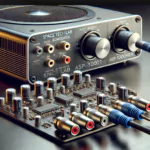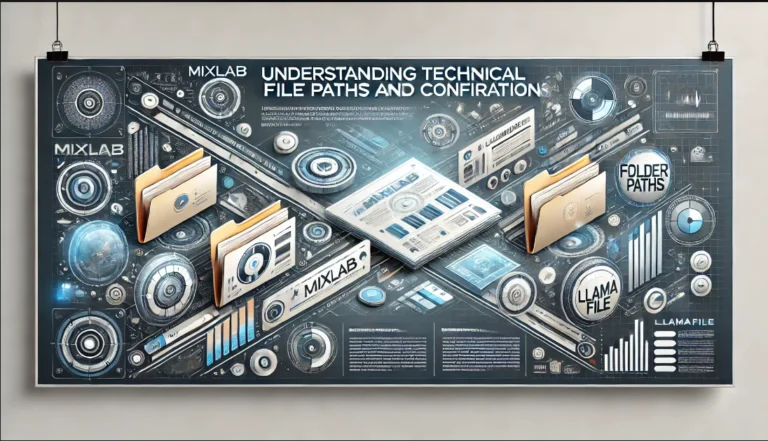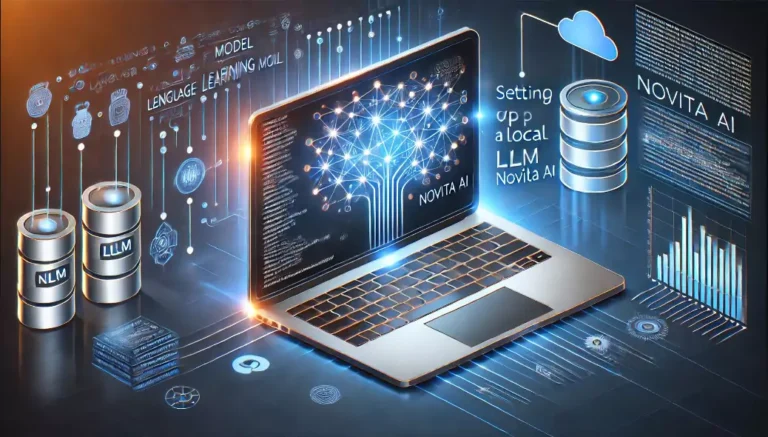What is OIT Technology?
In today’s rapidly evolving world, OIT technology continues to shape every facet of our lives, from how we communicate and work to how industries operate and innovate. Among the emerging trends, OIT technology has garnered significant attention.
But what exactly is OIT technology, and why is it becoming a focal point in various sectors? This comprehensive article explores the concept, applications, and impact of OIT technology, shedding light on its importance and potential.
Understanding OIT Technology
OIT stands for Operational Information Technology. It represents the integration of information technology (IT) systems with operational technology (OT) systems. Traditionally, IT systems have focused on managing data, supporting business processes, and ensuring connectivity, while OT systems have been dedicated to monitoring and controlling industrial processes, machinery, and physical systems. OIT technology bridges these two realms, creating a unified approach to managing both digital and physical assets.
The Core Components of OIT Technology
To better understand OIT technology, it’s crucial to examine its core components:
- Integration Platforms:
- OIT relies on platforms that enable seamless communication between IT and OT systems. These platforms often include middleware solutions, APIs, and industrial protocols that allow data to flow smoothly between different systems. This integration enables enterprises to operate with greater efficiency and accuracy by synchronizing their IT and OT domains.
- Sensors and IoT Devices:
- The Internet of Things (IoT) plays a pivotal role in OIT by providing the necessary sensors and devices to collect real-time data from physical systems. These devices serve as the bridge between the physical and digital worlds, gathering data on parameters like temperature, pressure, speed, and more. Advanced IoT devices equipped with edge computing capabilities can process data on-site, minimizing latency and bandwidth usage.
- Data Analytics and AI:
- Advanced analytics and artificial intelligence (AI) are central to OIT. They process and analyze the vast amounts of data generated by IT and OT systems, offering actionable insights for decision-making. Predictive analytics, for instance, helps organizations foresee potential issues before they occur, enabling proactive responses.
- Cloud Computing:
- Many OIT solutions leverage cloud computing to store and process data. The cloud provides scalability, flexibility, and accessibility, enabling organizations to manage their operations efficiently. Cloud-based OIT platforms also facilitate collaboration by allowing multiple stakeholders to access and share data seamlessly.
- Cybersecurity:
- Integrating IT and OT systems introduces new vulnerabilities, making robust cybersecurity measures a critical component of OIT technology. Comprehensive cybersecurity frameworks for OIT include firewalls, intrusion detection systems, encryption, and real-time threat monitoring.
Key Features of OIT Technology
- Real-Time Monitoring: OIT systems provide real-time visibility into operations, enabling organizations to respond promptly to issues and optimize processes. This capability is particularly valuable in industries like manufacturing and energy, where immediate responses to system changes can prevent costly downtime or accidents.
- Predictive Maintenance: By analyzing data from OT systems, OIT technology can predict equipment failures and schedule maintenance proactively. This approach reduces unplanned downtime, extends the life of assets, and minimizes maintenance costs.
- Improved Efficiency: The integration of IT and OT streamlines workflows, reduces redundancies, and enhances overall operational efficiency. For example, automated data sharing between systems eliminates the need for manual input and reduces the likelihood of errors.
- Enhanced Decision-Making: With access to comprehensive data and analytics, organizations can make informed decisions that drive growth and innovation. Visualization tools, dashboards, and AI-driven recommendations empower stakeholders to act with confidence.
Applications of OIT Technology
OIT technology has a wide range of applications across various industries. Here are some notable examples:
1. Manufacturing:
- In manufacturing, OIT technology enables smart factories where machines, sensors, and IT systems work in harmony. This results in improved production quality, reduced downtime, and optimized supply chain management. For instance, assembly lines equipped with IoT sensors can detect anomalies in real time and adjust operations accordingly.
2. Energy and Utilities:
- In the energy sector, OIT helps monitor and control power grids, optimize energy consumption, and integrate renewable energy sources. For utilities, it enhances the efficiency of water and gas distribution systems. Smart grids powered by OIT technology enable demand-response systems, where energy usage is adjusted based on supply conditions, reducing waste and improving reliability.
3. Healthcare:
- OIT technology supports advanced medical devices, telemedicine, and hospital management systems, ensuring better patient care and operational efficiency. Hospitals use OIT to monitor critical systems such as HVAC and power supply, ensuring a safe and controlled environment for patients.
4. Transportation and Logistics:
- From autonomous vehicles to smart logistics systems, OIT technology enables real-time tracking, route optimization, and efficient fleet management. OIT-powered transportation systems can adapt to changing conditions, such as traffic congestion or weather disruptions, improving delivery timelines and customer satisfaction.
5. Construction and Infrastructure:
- In construction, OIT facilitates the use of smart equipment, real-time project monitoring, and predictive maintenance of infrastructure assets. Smart sensors embedded in bridges and buildings can detect structural weaknesses early, allowing for timely repairs and preventing catastrophic failures.
6. Retail:
- Retailers leverage OIT to manage inventory, enhance customer experiences through personalized marketing, and optimize supply chain operations. Smart shelves equipped with IoT devices can monitor stock levels in real-time, ensuring timely restocking and reducing inventory shrinkage.
7. Agriculture:
- Precision agriculture, enabled by OIT, uses IoT devices and analytics to monitor crop health, optimize irrigation, and improve yield. Farmers can analyze weather patterns, soil conditions, and pest activity to make data-driven decisions that enhance productivity and sustainability.
Benefits of OIT Technology
The adoption of OIT technology offers several advantages for organizations:
- Increased Productivity:
- By automating processes and providing real-time insights, OIT technology enhances productivity across operations. Workers can focus on higher-value tasks while routine operations are handled by automated systems.
- Cost Savings:
- Predictive maintenance, energy optimization, and efficient resource utilization reduce operational costs. For example, factories using OIT technology can identify energy-intensive processes and implement measures to reduce consumption.
- Enhanced Safety:
- OIT systems monitor equipment and environments for potential hazards, ensuring safer working conditions. In industries like oil and gas, OIT can detect leaks or equipment malfunctions before they escalate into serious incidents.
- Scalability:
- The modular nature of OIT solutions allows organizations to scale their operations as needed. As businesses grow, they can add new devices, sensors, and capabilities to their OIT systems without overhauling the existing infrastructure.
- Sustainability:
- By optimizing energy use and reducing waste, OIT technology supports environmentally sustainable practices. Organizations can monitor their carbon footprint and implement strategies to achieve sustainability targets.
Challenges in Implementing OIT Technology
While OIT technology offers significant benefits, its implementation is not without challenges:
- Integration Complexity:
- Merging IT and OT systems can be complex, especially when dealing with legacy systems. Ensuring compatibility between old and new technologies requires careful planning and execution.
- Data Security:
- The integration of systems increases the attack surface for cyber threats, requiring robust security measures. Organizations must invest in advanced cybersecurity tools and continuously monitor their systems for vulnerabilities.
- Skill Gaps:
- Organizations may face challenges in finding skilled professionals who understand both IT and OT domains. Training programs and partnerships with technology providers can help bridge this gap.
- Cost of Implementation:
- The initial investment in OIT technology can be high, particularly for small and medium-sized enterprises. However, the long-term benefits often outweigh the upfront costs.
- Regulatory Compliance:
- Industries must navigate regulatory requirements when implementing OIT solutions, adding to the complexity. Compliance with standards such as ISO and NIST is essential for ensuring safety and reliability.
The Future of OIT Technology
The future of OIT technology looks promising, driven by advancements in AI, IoT, and 5G connectivity. Key trends to watch include:
- Edge Computing:
- Processing data closer to the source will enhance the speed and efficiency of OIT systems. Edge computing reduces reliance on cloud servers, enabling faster decision-making in critical operations.
- Digital Twins:
- The use of virtual replicas of physical systems will enable real-time simulation and optimization. Digital twins allow organizations to test scenarios and predict outcomes without disrupting actual operations.
- AI-Powered Insights:
- As AI algorithms become more sophisticated, OIT systems will offer deeper insights and automation capabilities. Machine learning models will identify patterns and anomalies, driving continuous improvement.
- Sustainability Focus:
- OIT technology will play a critical role in helping organizations achieve sustainability goals through energy optimization and waste reduction. Innovations like smart grids and renewable energy integration will become more prevalent.
- Increased Adoption Across Sectors:
- More industries will adopt OIT technology as its benefits become increasingly evident. Governments and organizations worldwide are investing in digital transformation initiatives that prioritize OIT solutions.
Conclusion
OIT technology represents a transformative approach to integrating the digital and physical worlds. By combining the strengths of IT and OT systems, it enables organizations to optimize operations, enhance decision-making, and drive innovation. As technology continues to advance, OIT will undoubtedly play a pivotal role in shaping the future of industries, making it an essential area of focus for businesses and professionals alike.
Whether you are an industry leader, a technology enthusiast, or someone looking to understand emerging trends, OIT technology is a concept worth exploring. Its potential to revolutionize operations, enhance efficiency, and contribute to a sustainable future makes it a cornerstone of modern innovation. The convergence of IT and OT is not just a technological shift; it’s a paradigm change that will redefine how we interact with and manage the world around us.
For More Information, Check out NetworkForbe






